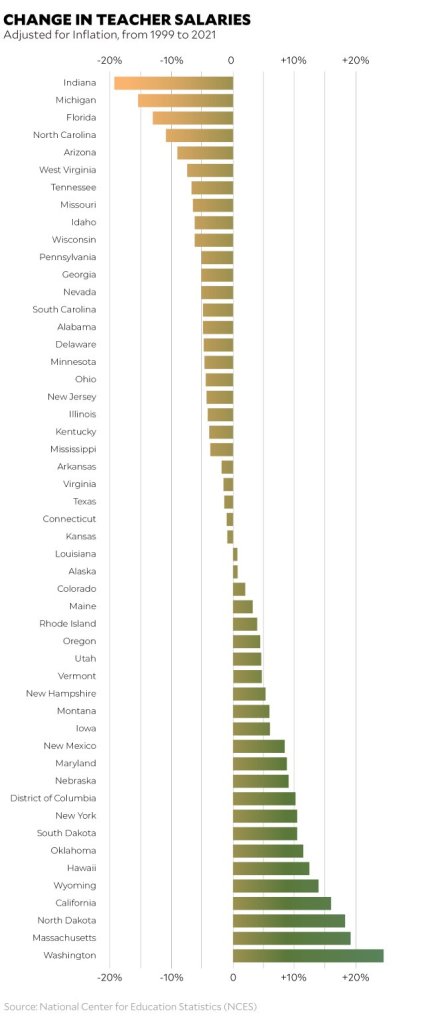
We have long heard the statement that 3 out of every 5 new teachers will leave the profession in the first five years. However, it seems that the survey on which those numbers were based has aged out. A more recent study has shown that a 17% attrition rate is a more accurate figure for the first five years. This, however, is not the reason why we are seeing what is being labeled as a “teacher shortage” nationwide. Of course, the pandemic caused many people to reassess their professions and lives, leading to a significant increase in retirements. Neither of these factors is significantly different from those affecting most other professions. So why are there so many headlines about the “teacher shortage”?
First, what is it that defines what a teacher is? Generally speaking, a teacher has at least a bachelor’s degree, and in many states a required Master’s degree, and a teaching certification in at least one subject area. Between 2018 and 2019 approximately 98,000 students completed teacher preparation programs and received their teaching certificates. That leads us to the real question, which is; Why would a person graduate from college and not take a position entering a profession that they had spent at least four years preparing for?
According to the Bureau of Labor Statistics, the average median annual wage for teachers in the US is $61,000 per year. Many districts do not even keep up with the cost of living increases over the years. Jobs other than teaching requiring a bachelor’s or a master’s degree range from $73,560 to $142,170 per year. The obvious must be stated here. Factors beyond salary, such as job satisfaction, work-life balance, and impact on the profession and society, are also major considerations. Additionally, it’s also about the kids. Unfortunately, those are the very things that have been used to keep teachers’ salaries down to maintain lower property taxes that fund education.

What is different now, that teachers are being driven from their chosen profession?
It is too simple to blame the pandemic for all of this, but in some ways, that was the start. The political atmosphere around the pandemic had a profound effect on the teaching profession. Teachers, at first, when schools began to close down, were hailed as heroes. I was emotionally moved when teachers from my school district drove their cars in a procession throughout our entire community in support of their students. Television network news shows all had feel-good stories about teachers and kids. As the school closings lingered on, however, everyone was under greater pressure, even beyond the fear of the pandemic itself. Families closed up and locked down with little hope for change, and it took its toll.
Politicians and ideologues began attacking teachers and administrators for any reason they could in support of whatever popular conspiracy theory was circulating in their area. Schools were forced to open in some places and forced to close in other areas. People were not satisfied with whatever the solution was, but all agreed it was the school’s fault. At least that is what many teachers expressed to me.
The very things that drew teachers to their profession have been stripped away. The paltry salaries offered by many school districts, which had been made palatable because of the other more intrinsic benefits of the job, no longer attract new people or even retain veterans.
To end this nationwide “Teacher Shortage,” we need to change the job itself. Start teachers with a wage that is at least comparable to other professions requiring a comparable education. Provide a supported mentorship program for new teachers, guiding them through their opening years. Respect a teacher’s expertise in the area for which they have been educated to teach. Provide an agreed-upon due process system for holding teachers accountable. Insulate education from ideologues and conspiracy theorists. Provide a means for open communication between parents and teachers. Respect teachers for who they are and what they do.
It is my belief that we do not have a “Nationwide Teacher Shortage,” but rather a nationwide shortage of good education jobs for certified educators. Let’s match up all of our certified teachers, who have been forced to seek other employment, back to the profession for which they have been educated














